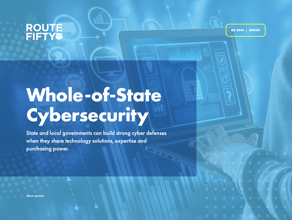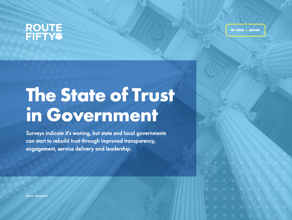Deer Are Threatening American Forests. Is More Hunting the Solution?
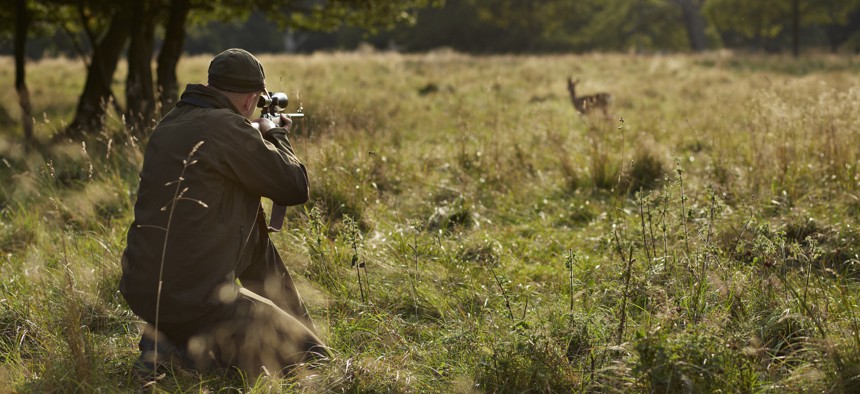
Klaus Vedfelt via Getty Images

Connecting state and local government leaders
To protect habitats and carbon-capturing forests, scientists say the deer population needs to be drastically reduced in many areas.
This story was originally published by Grist. You can subscribe to its weekly newsletter here.
For weeks, former suburbanite Eli Arnow had spent his mornings and evenings stalking deer in the woods around his new home in New York’s Hudson Valley. Besides killing a chipmunk or two as a kid, he was new to hunting, and he was starting to get discouraged: He’d only gotten a few shots within range and they were all misses. Then one November day, he looked out the window to see a deer — not only on his own lawn but right in front of his archery target.
He didn’t hesitate. He ran downstairs and grabbed his crossbow, stepped outside, and pulled the trigger. When he saw the deer hit the ground, he didn’t feel sadness or guilt. Instead, he experienced a sense of purpose. “I felt like, for the first time in my life, [I] was participating in an ecological process,” he said.
Across the United States, the deer population has ballooned in recent years to an estimated 30 million. Once a rare sight, deer have become something of a pest, spreading disease and causing fatal car accidents at an increasing rate. But for people like Arnow, who has a background in environmental science, the biggest issue is the impact of too many deer on the forest. With fewer bears and mountain lions around to keep their numbers in check, deer can reproduce with abandon and decimate the young trees and native plants that live beneath forest canopies.
“[If] we have a beautiful overstory of mature oak trees [but] zero oak saplings in the woods, there’s no future for the forest,” said Arnow, whose concern has turned into an obsession with herd management.
To protect these crucial habitats and carbon sinks in order to help keep climate change from spiraling further out of control, scientists say deer population density in much of the country must be drastically reduced. “For this thing to work, you have to drive the deer numbers down to a very low level,” said William McShea, a wildlife ecologist at the Smithsonian Conservation Ecology Center. “You can’t just have casual hunting.”
But with an aging population of hunters, only 41 percent of whom will shoot even one deer in a given season, it’s unlikely that recreational hunting as we know it could do the trick. That means the field is wide open for a shift in wildlife management.
The deer population in the United States has been exploding since the 1940s, a few generations after conservation-minded sportsmen began pushing the government to establish wildlife preserves and put major restrictions on hunting. Commercial hunting was made all but illegal, and over time, recreational limits were set depending on factors such as the time of year and sex of animal (there are often more restrictions on hunting females). The goal was to repopulate the deer, whose numbers had plummeted from a pre-settlement count of between 24 and 62 million to an estimated 300,000.
This “North American Model of Wildlife Conservation,” as it came to be known, worked well — too well. As American deer populations grew, they began to have an outsize effect on their habitats.
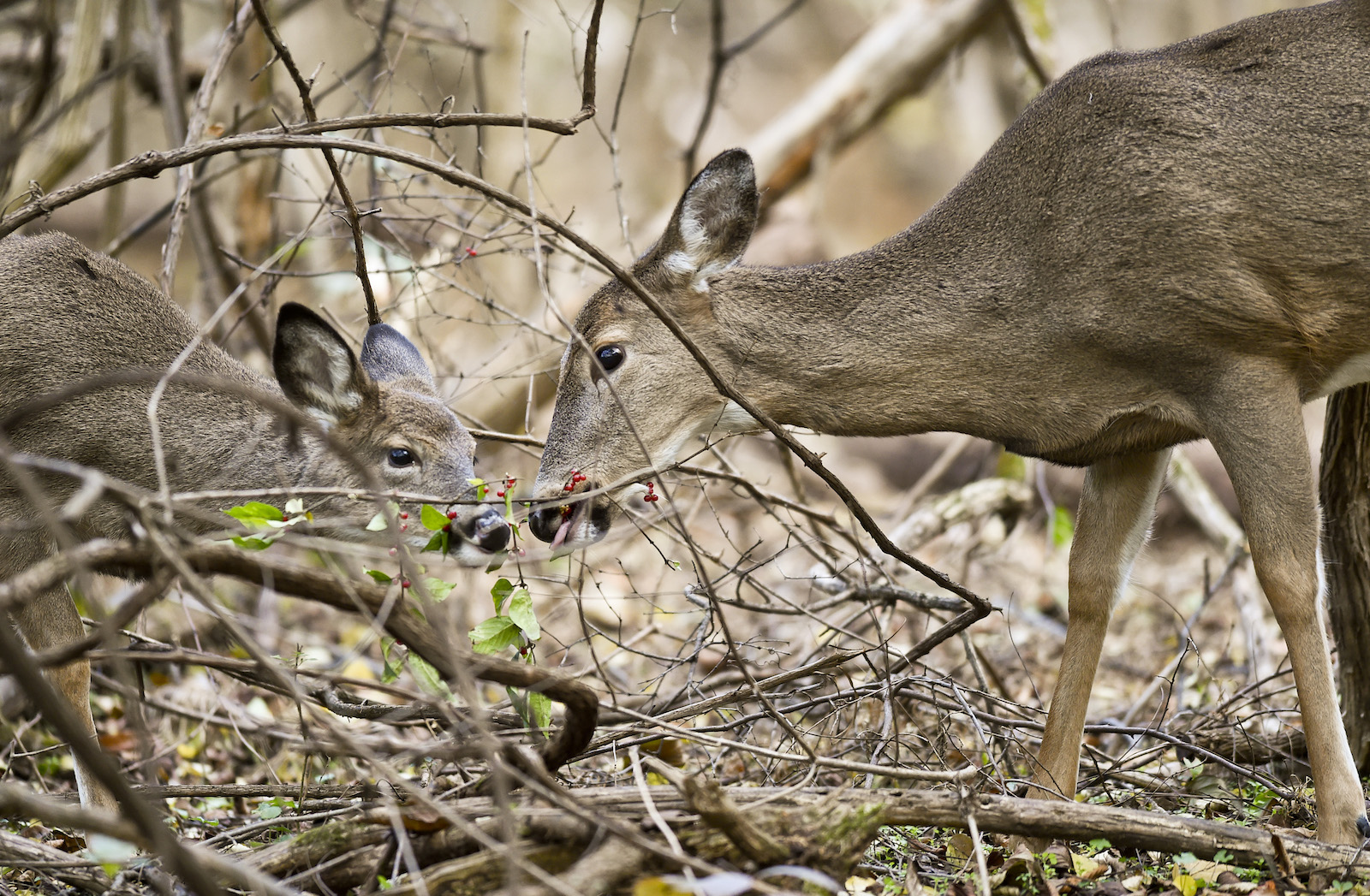
“Wherever you go, whether you are in the Northeast or out on rangelands, once you have these big herbivores in the system they all do the same thing — they eat,” said Bernd Blossey, a professor of natural resources and the environment at Cornell University. And deer dietary preferences do not lead to equal browsing across plant species — they’re often happy to consume seedlings, saplings, native flowers, and other understory plants while leaving invasive brush alone. The resulting lack of biodiversity can make forests less resilient in the face of pest pressure and major climate events.
Many nature lovers like Arnow say they can see deer damage just by walking in the woods. “These charismatic spring ephemerals, like trilliums and Pink Lady slippers, and these other flowering understory plants — they’re gone from large swaths of our landscape,” he said.
To the untrained eye, however, it might not appear that a given forest is unwell. But a 2019 study from the Journal of Applied Ecology study pointed out that “seemingly healthy forests can be at long-term risk due to insufficient juveniles,” meaning young trees, to replace older ones. The authors found that over half the eastern U.S. forests were experiencing “regeneration debt” as a result of anthropogenic forces, including those associated with deer overabundance.
Under normal circumstances, when there is an opening in the forest canopy — say due to the natural death of an old growth tree or a climate disturbance, such as a storm — one or more young trees can grow large and help fill the gap. If instead those young trees are damaged or eaten, the forest will become thinner and store less carbon. According to a 2013 Harvard University study, deer suppress new tree growth more than any other environmental factor. New tree growth is also crucial for the migration of tree species northward due to climate change.
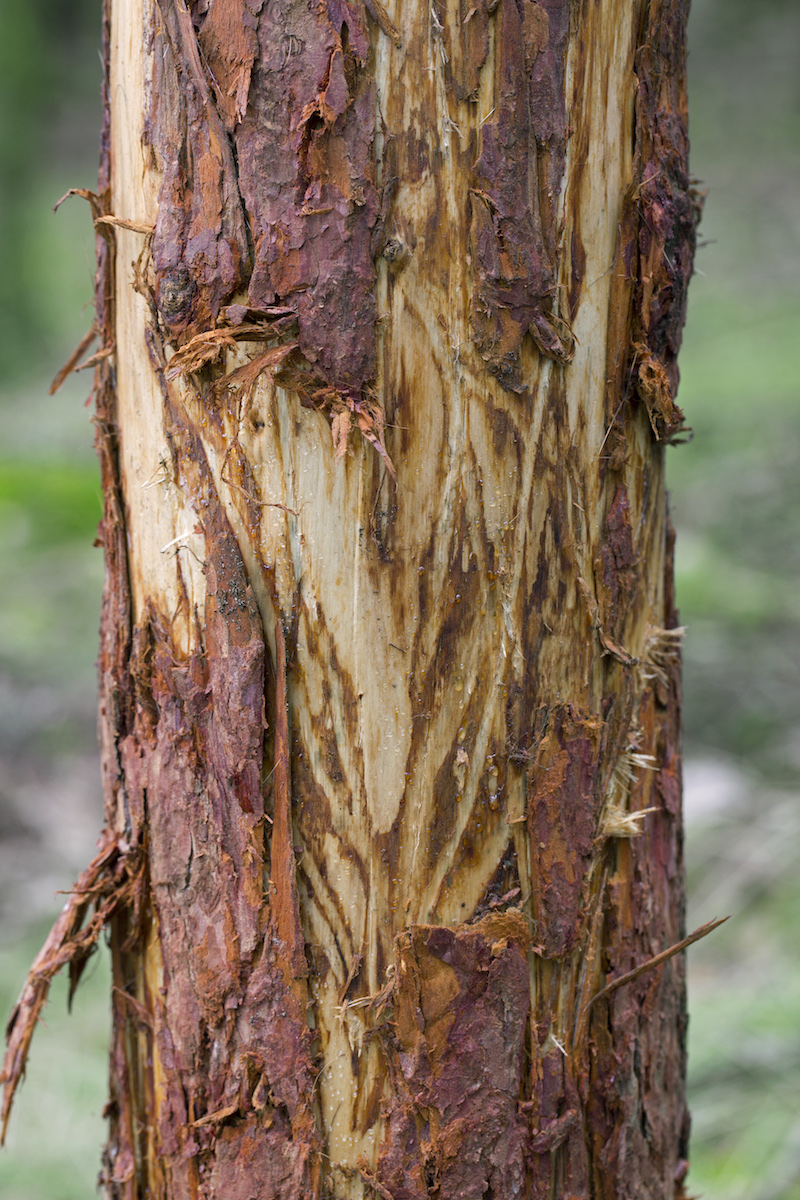
These impacts aren’t just hypothetical. The intensity with which deer snuff out new tree life has major implications for the success of reforestation efforts, which the current administration points to as a key component of its plans for climate mitigation. There are specific regional consequences, too. In New Jersey, for example, a study found that a high deer presence over time was associated with as much as an 80 percent decrease in the density of seedlings and saplings
“You cannot grow a forest, or at least not a biodiverse and healthy forest, in the presence of these large deer numbers,” Blossey said.
It’s tempting to reason that because hunting restrictions brought imbalance to American forests, the solution might be to simply … let people kill more deer again. But that’s a challenging proposition for a couple reasons: Some stakeholders are committed to a nonlethal population control strategy through the sterilization of female deer. (This approach has been attempted in the suburban area of Staten Island in New York City, but multiple studies say it is too costly and ineffective to be used in major forests.) And within the hunting community, reducing the deer population can feel like a conflict of interest.
“It’s human nature that when you go out [to hunt] you want to see those animals and it’s ‘more is better,’” said Kip Adams, hunter and wildlife biologist at the National Deer Association, a nonprofit that supports deer hunting in the spirit of wildlife conservation. In other words, for many hunters, the increased presence of deer feels like a cause for celebration rather than concern. Especially for those who have been around long enough to remember the days when the focus was to revive the population.
Even for hunters convinced that there are now too many deer in some places, it’s not necessarily easy to participate in herd management. Federal law currently states that wild game species “cannot be sold, but can be harvested for personal consumption” or given away (with just a few exceptions). And there’s only so much venison one can cram inside a home chest freezer. In some states, slaughterhouses will process deer meat for food banks, but for many hunters, that’s no incentive to schlep around these carcasses, each of which can weigh about 100 pounds.
If it were up to wildlife ecologist William McShea, government officials would rethink the restrictions on selling game meat. “[Hunters] are very happy to drive deer density from 50 to 25 per square kilometer,” he said,“but how do you go from 25 to 12? It’s by letting people sell that deer.” But as of now, there is no cohesive or concerted effort to change those policies. Another motivation could be hunting for pay. But these types of culls are typically held in high-density areas where deer are considered a nuisance to humans.
But even if the restrictions around wild game meat were lifted, forest conservation efforts would need more hunters to sign on to help reduce the deer population to a more sustainable level. According to the National Survey of Fishing, Hunting, and Wildlife-Associated Recreation, 60 percent of current hunters are above the age of 45. Bringing a new generation into the mix is both a challenge and an opportunity — to add more perspective to the field.
“All of our ancestors were hunters at one point,” said Lydia Parker, executive director of the nonprofit group Hunters of Color and member of the Mohawk nation. “We, as communities of color, have just been removed from that in the United States.”
In a survey of over 17,000 college students, a 2021 University of Michigan study found that students with previous hunting experience were most likely to be white and male, but those with some interest were more likely to be women and people of color. That same group of “potential” hunters was more likely to face constraints due to lack of hunting knowledge and skills. That’s something that Parker and her organization seek to address by making hunting more accessible and to people with limited access. Last year, the group teamed up with the National Deer Association adult hunter recruitment program, Field to Fork, to take a group of beginner hunters out in New York State.
“[If] hunting is going to continue to perform the society’s service, it can’t just all be white males,” said Adams, who works with the program. “We need to diversify.”
Parker believes that more hunting can be a positive thing, especially when it comes from increased diversity in the field. But for her it’s also about a different approach to wildlife management. “There is no word for conservation in most of our Indigenous languages,” Parker said, “because we didn’t need to fix a problem like that. We didn’t have overhunting or market hunting before European contact.” She said that “traditional ecological knowledge was the original conservation.”
A 2018 study published in Ecology and Society compared forests managed by the Ojibwe and Menominee tribes in Wisconsin to those managed by nontribal organizations nearby. The tribal forests had lower deer densities, higher rates of tree regeneration, greater plant diversity, and fewer invasive species. The authors theorized that “flexible hunting policies based on cultural values,” including hunting deer for sustenance, welcoming the presence of predators such as wolves and bears, and loosening hunting restrictions were responsible for the differences.
Back in the Hudson Valley, Arnow hopes to recruit hunters from his community and raise awareness about the ecological impacts of deer through working with town’s conservation advisory council.* So far, he’s only been able to get one friend on a hunt — someone already motivated based on her own education in forestry. But he’s convinced his argument holds sway, especially given the increasing interest in sustainable, local food sources. He feels that a culture shift in hunting is a crucial part of restoring forests, which, if protected from browsing, could happen in as little as 11 to 20 years, according to one study.
The same 2021 University of Michigan study that asked college students about their potential interest in hunting found that one of the two primary motivations for young people was altruism, defined as “the community benefits of hunting” such as controlling overabundant wildlife populations for the benefit of ecosystems. (The other primary motivation was obtaining game meat.)
Arnow is aware that humans are to blame for many of the problems associated with too many deer. Still, he feels that hunting deer is a way for those like him to restore balance and connect with nature — a thought he remembers from his very first kill: “I am now a predator on this landscape, in a time when there are virtually no natural predators.”
*This article has been corrected to more accurately reflect the way Eli Arnow recruits new hunters.

NEXT STORY: States With the Largest and Smallest Teacher Pay Gaps

